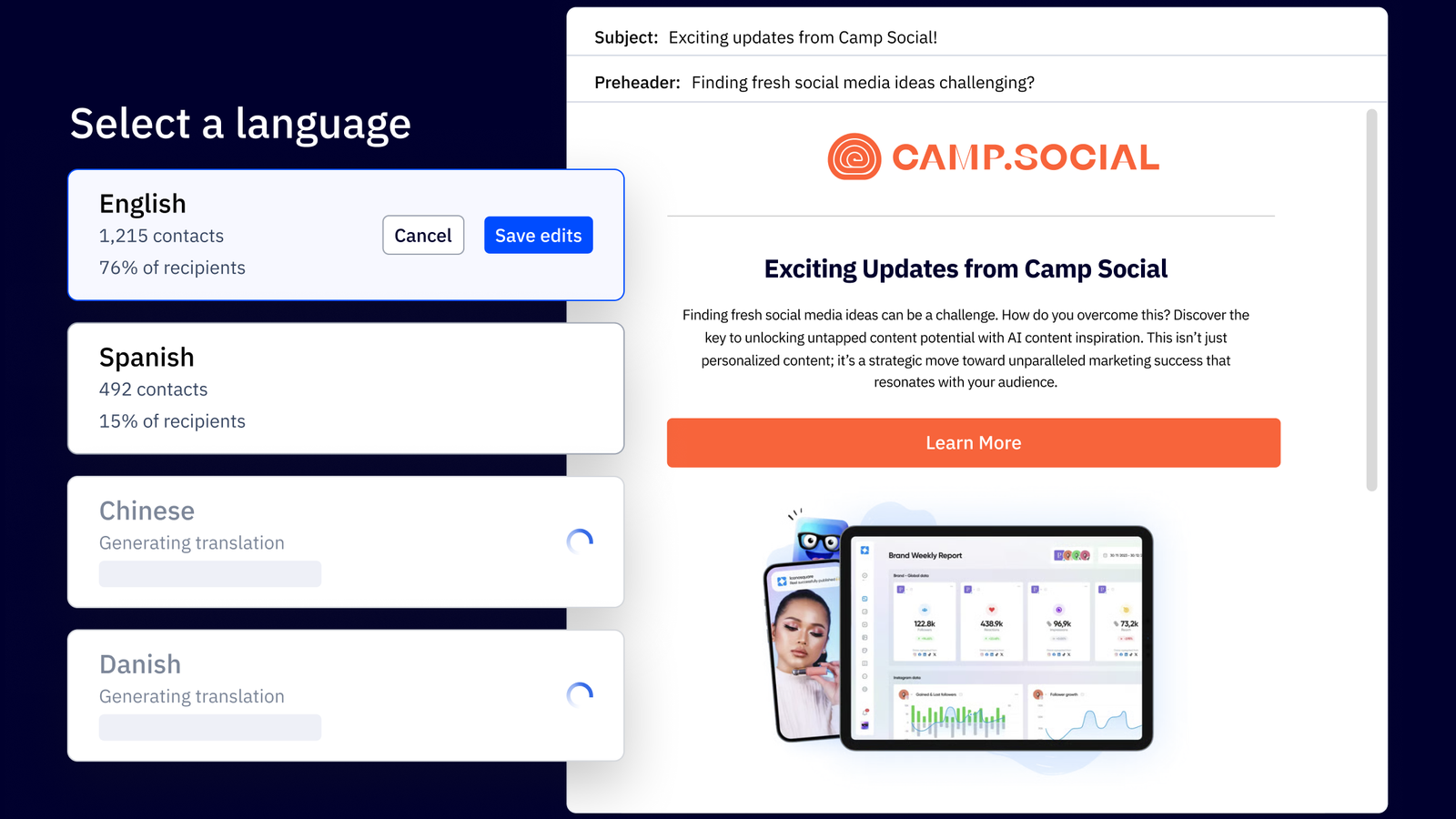Chances are, you didn’t go to school for franchise marketing. There are few textbooks and next to no training programs — most franchise marketers get their education on the job.
At ActiveCampaign, we speak to dozens of franchise marketers each month. We see them on calls or in the halls of a conference. We hear about franchises’ wins, the challenges, and all of the under-the-radar things that can vault a marketing program from “struggling to stay afloat” to “a well-oiled machine.”
We’ve noticed a theme from all those conversations: strategy is critically important, but the first order of operations is getting control of your time. The franchise marketer is serving the customer, the franchise leadership, and every franchise location. Those multiple constituencies can quickly eat away at your calendar.

The most effective franchise marketers have thoughtful time management habits that help them do their best work. Here’s how they do it:
Habit #1: Moving from decentralized to hub and spoke
This is the big one, and that’s why it’s first. No amount of habit changes will be effective if you have to deal with each franchise one-on-one with its own set of tools, tech stack, calendars, and marketing campaigns.
Julia Farina, Director of Product Marketing at Calendly underscores, "Time is easy to waste and hard to get back. The most effective teams aren’t trying to do more; they’re making smarter decisions about where their time goes. That’s why a few well-chosen tools that work together, like shared calendars and automation, can meaningfully reduce busywork and give teams time back to focus on higher-impact work."
When you have a decentralized approach, any change to deliverables or campaigns is made manually. The more franchisees you add, the longer any strategy adjustments take to implement. Which is why the more you grow, the more chaotic your day feels.

Your first step to get control of your time is to move to a “hub and spoke” approach, one where franchisees use the same tools, the same communication platforms, and run on the same marketing calendar.
“We realized we had no visibility into what our franchisees were doing with their email marketing,” explained Brittany Graff, Head of Marketing at Painting with a Twist. “Some were using different systems, some weren’t sending emails at all. We really needed a hub where we could have visibility into what was going on across all locations and provide branded resources to help them succeed.”
But be aware of being too draconian with your standardization effort. We’ve found that “The Consolidation Mirage” is real and can impair your ability to execute.
Habit #2: Creating clear brand guidelines with room for localization
It’s the classic franchise tug of war: If you create brand assets and guidelines that are too strict, you’ll limit the creativity and agency of your franchisees. If your guidelines are too loose, your franchisees will be unable to build on each other’s success and customers will get a disjointed and confusing experience.
The solution is guardrails, but not ironclad rules.
"What happens is that the franchisor wants control, but the franchisee then looks very generic, and then the franchisee doesn’t rank as high in search,” says Kristi Mailloux, Managing Partner of Three20 Capital. “If content could be created for the franchisee that localizes it, without a lot of work from the franchisor. That would be the fix."
Templates, not full campaigns.
Establish the constraints that allow your individual franchises to be creative, and be sure to listen for feedback. Chances are, it will take some revisions to strike this balance.
"When we started providing completed templates and saved modules, we saw a 65% increase in the number of emails being sent across the system and a 25% increase in revenue attributed to email marketing. It was a huge win for our system," says Graff.
(Our Template Sync feature can help. Create one template and then share and sync with individual locations so they can customize for their own needs.)
When you offer templates, you reduce or eliminate the time spent assisting each individual franchise with creating their own campaigns. You also save time chasing down off-brand collateral.
Your franchisees, on the other hand, can focus on creating emails that resonate rather than fiddling with email settings or creating assets from scratch.
Habit #3: Building franchise community
In the early days, you could be a phone call away from any of your franchisees. This is healthy and good, giving you a direct line to the people who are working with and learning from customers every day. Eventually, however, you’ll have to graduate from this white glove approach as you’ll quickly find your calendar overflowing.
In our recent study, we found that 35.2% of franchise marketers say a lack of franchisee engagement is a challenge.
Instead, move your operations to a community-based approach — one where franchisees can easily connect to share what’s working, what they are struggling with, and answer one another’s questions. As the franchise marketer, you can revert to a moderator or community leader role.
Remove yourself as the sole source of truth and empower your franchisees to freely share best practices. This has the dual benefit of empowering your franchisees and allowing trends to quickly surface so you can make better strategic choices. For example, if you notice several franchisees voicing concerns about the effectiveness of social media, you can evaluate your current strategy and adjust course.
Good time management for franchise marketers entails using your time for high-impact activities. Frantically responding to one-off requests will fill your call and meeting calendar and not allow you to set up systems that run without your input.

Additionally, this approach shows that HQ is listening and ensures that you’re not throwing money away on marketing that doesn’t work.
Habit #4: Collecting personalized data from franchisees and customers
There will come a time when you’ll need to boost sales in a certain metro. Or offer a discount to help promote a certain product. For most of your marketing campaigns, you’ll want to apply some precision to avoid exhausting your community.
This requires having data on geography, previous purchases, average spending, and more. There are two approaches for doing this:
Approach #1: Start a loyalty program
In our recent survey of franchise leaders, 61% of franchises offer loyalty incentives. It’s a perfect way to ensure your best customers come back, and allows you to better map purchasing patterns to individual households. Start here if you don’t have a bunch of first-party data you could be leveraging and need to start collecting it.
Approach #2: Custom fields in your marketing tools
However, if you do have the opportunities already in place to collect additional data, start here. Whether it’s for booking appointments, responding to marketing emails, or asking for more information, every time someone interacts with your brand digitally is an opportunity to learn a little more about them.
Also included in our survey: 50% of brands that use automation like this in their email marketing report their marketing as “somewhat effective” or “very effective.” However, 34.4% of franchise owners say that difficulty with personalization is one of their biggest frustrations.
Over to you
Creative work often takes large, unstructured blocks of time—that's difficult when you’re managing endless inbound requests. To get to a place where you’re proactive and not reactive, we recommend tackling these efforts in order:
- Habit #1: Moving from decentralized to hub and spoke. Ensure that any future efforts can be rolled out once from the “hub.”
- Habit #2: Creating clear brand guidelines with room for localization. Without templates, you’re starting from scratch with each campaign.
- Habit #3: Building franchise community. Allow your franchises to solve issues for one another, before they even get to your inbox.
- Habit #4: Collecting personalized data from franchisees and customers. Decrease the chances of wasted campaigns, and ensure future campaigns are more likely to succeed.
Interested in the stats included throughout this article?







